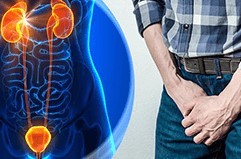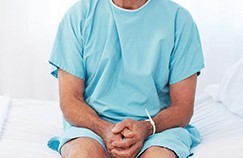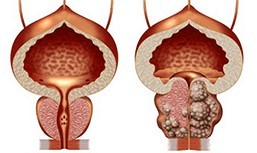Prostatitis is an inflammation of the prostate gland (enlargement of the prostate gland), the organ that produces liquid secret, which is part of the semen. Disease sometimes causes severe pain and problems with the power. The treatment of prostatitis, it is reasonable to begin immediately after diagnosis.
The symptoms
Prostatitis usually affects men, that from 25 to 50. The disease is widespread. You suffer from a third and half of all men on the planet. The problem of the many symptoms:

- men and women feel the discomfort, the pain when you urinate;
- the urine is slow, in a thin stream, his having to squeeze;
- at night and at a different time of the day often occurs the desire to celebrate a small need. Does not leave the feeling that not all of the urine left in the bladder;
- the urine should be turbid, with a hint of blood;
- to exasperate the pain in the lower part of the abdomen, back, groin, perineal area (between the scrotum and the anus);
- also, you don't give peace the pain, discomfort in the area of the testicles, penis;
- ejaculation occurs with the pain;
Often you experience the symptoms of prostatitis, which are similar to a cold (a fever, a fever). Are peculiar to the bacterial varieties of the disease (below).
Causes
Prostatitis occurs more frequently in men, previously subjected to this disease. The issue generates:
- the infection in the bladder and urethra;
- HIV and other diseases to which man is infected during sex;
- trauma in the pelvic area - fall with the bike, riding;
Cause prostatitis in men the catheter in the urethra for the exit of urine from the bladder.
Pathology sometimes appears after the prostate biopsy, when the analysis is taken from a tissue sample. After this procedure, the symptoms of prostatitis in men occur rarely.
Complications
Because of prostatitis can:
- an inflamed appendix eggs (epididymitis);
- significantly reduced the number of sperm, treading the infertility;
- appear abscess (cavity with pus).

Numerous scientific studies do not reveal a direct relationship between prostatitis and prostate cancer.
The types of prostatitis
You prostatitis 5 main types: chronic and non-bacterial acute, chronic, and acute bacterial, asymptomatic.
- Chronic non-bacterial (it is the syndrome of chronic pelvic pain). The most common (over 90% of all patients fall ill to them). Signs of prostatitis and unstable, they come and go. The pathogens in the body is not detected. The diagnosis is made, if, for at least 3 months, the man suffers from pain in the pelvic area, discomfort during urination and other such symptoms. The exact cause of the development of the disease is not known, but probably call it:
- neurological problems (neuropathy);
- irritation of the prostate, which produces a poor flow of urine from the bladder;
- problems with the muscles of the pelvic floor (dyssynergia);
- atypical, as yet, unknown to science, viruses, bacteria.
- Non-bacterial acute. Accompanied by a syndrome of chronic pelvic pain, constant problems with urination.
- Acute infection. The most serious type of the disease. It is rare. Generated:
- and. coli, staphylococci, and other bacteria;
- venereal diseases (chlamydia, gonorrhea);
- the fungus Candida.
- Chronic infectious. The disease may not be known for a couple of years. The symptoms are similar to the tip of the bacterial type, but they manifest themselves not so much.
- Asymptomatic. Discovered for case. The symptoms are absent. The ULTRASOUND shows signs of inflammation, and blood analysis - increase in the content of prostatospecific antigen.

The symptoms grow quickly. Discomfort in the area of the catchment, joins genital pain, fever, nausea, burning sensation during urination. The form of acute bacterial prostatitis can cause serious, life-threatening complications - abscesses, inability to urinate, low blood pressure.
The diagnosis
The diagnosis is made with the help of:
- finger rectal examination;
- the analysis of the urine. It is necessary to determine if there are prostate infection;
- analysis of the blood. Verified the level of prostatospecific antigen. The test detects signs of inflammation;
- ULTRASOUND of the urinary tract. Assigned when the above-mentioned tests for a precise diagnosis is not enough. ULTRASOUND of the prostate is preferable to make through the anus (transrectally way).
In addition, sometimes the physician examines the secret of the prostate. To do so, is a massage of the breast.
May be assigned analysis on various venerologic infection, which can cause inflammation of the prostate.
A professional diagnosis will allow you to prescribe the correct treatment of prostatitis in men.
Treatment
If bacterial prostatitis, the doctor prescribes:
- Antibiotics. Their appearance depends on the identified bacteria. Take the medication will have a month and a half. If the symptoms are very heavy, antibiotics, urgent) are administered intravenously.
- Alpha-blockers. Funds relax the muscles of the bladder in a place where it joins the prostate. Clean the pain during urination.
- Analgesics - non-steroidal anti-inflammatory drugs.

You may prescribe medications alone. Only the doctor defines how to cure the prostatitis.
Prevention
To prevent prostatitis:
- let us take a warm home bath;
- we apply it to the lower part of the abdomen or back heating pad-cushion;
- quit drinking alcohol, caffeine, food, increases the acidity (spicy, salty);
- we use a lot of liquid (salty). So we'll wash system, genito-urinary tract, the bacteria are able to reproduce;
- we will try for a long time not ride a bike, long does not sit;
- let's not forget the hygiene of the penis the perineum;
- we use contraceptives;
- do sports. Simple cardio exercises will be enough to start jogging, swim in the pool, do a workout easy.
Prevention of prostatitis should become a part of life. Some simple ways to protect the body.































